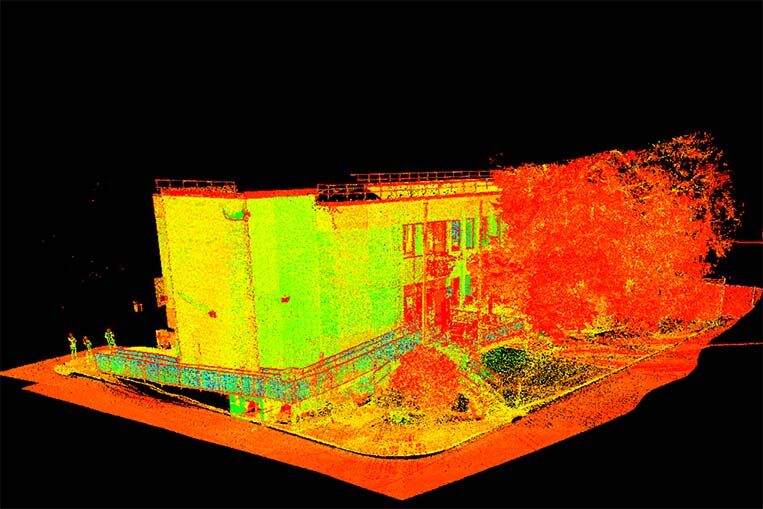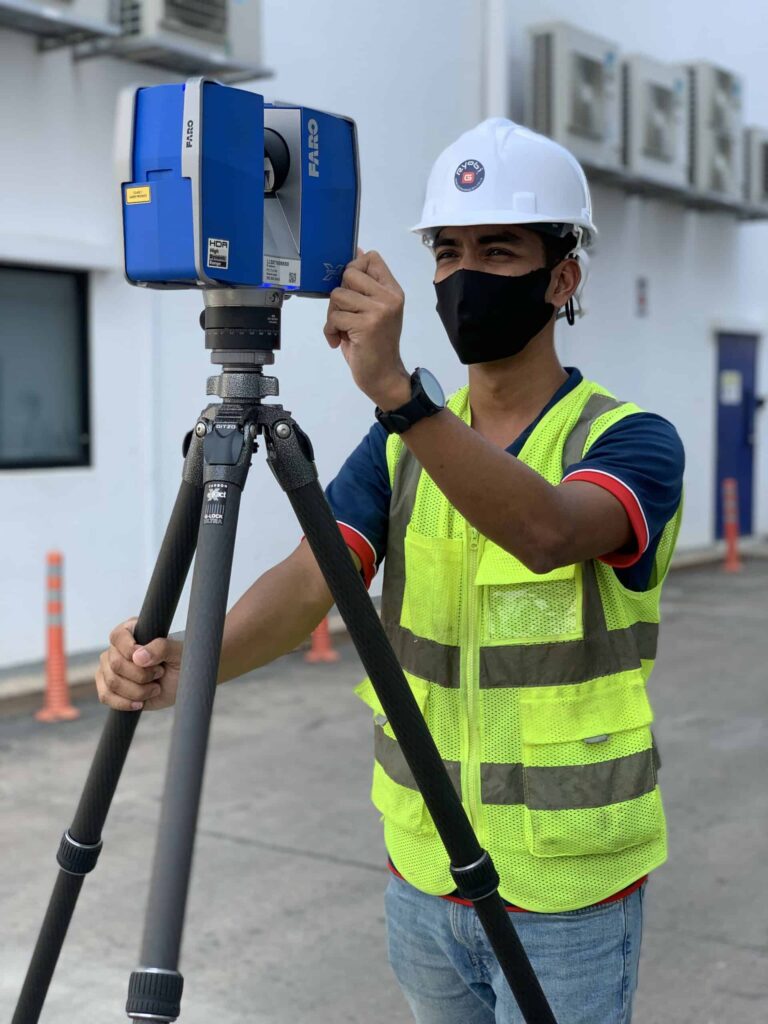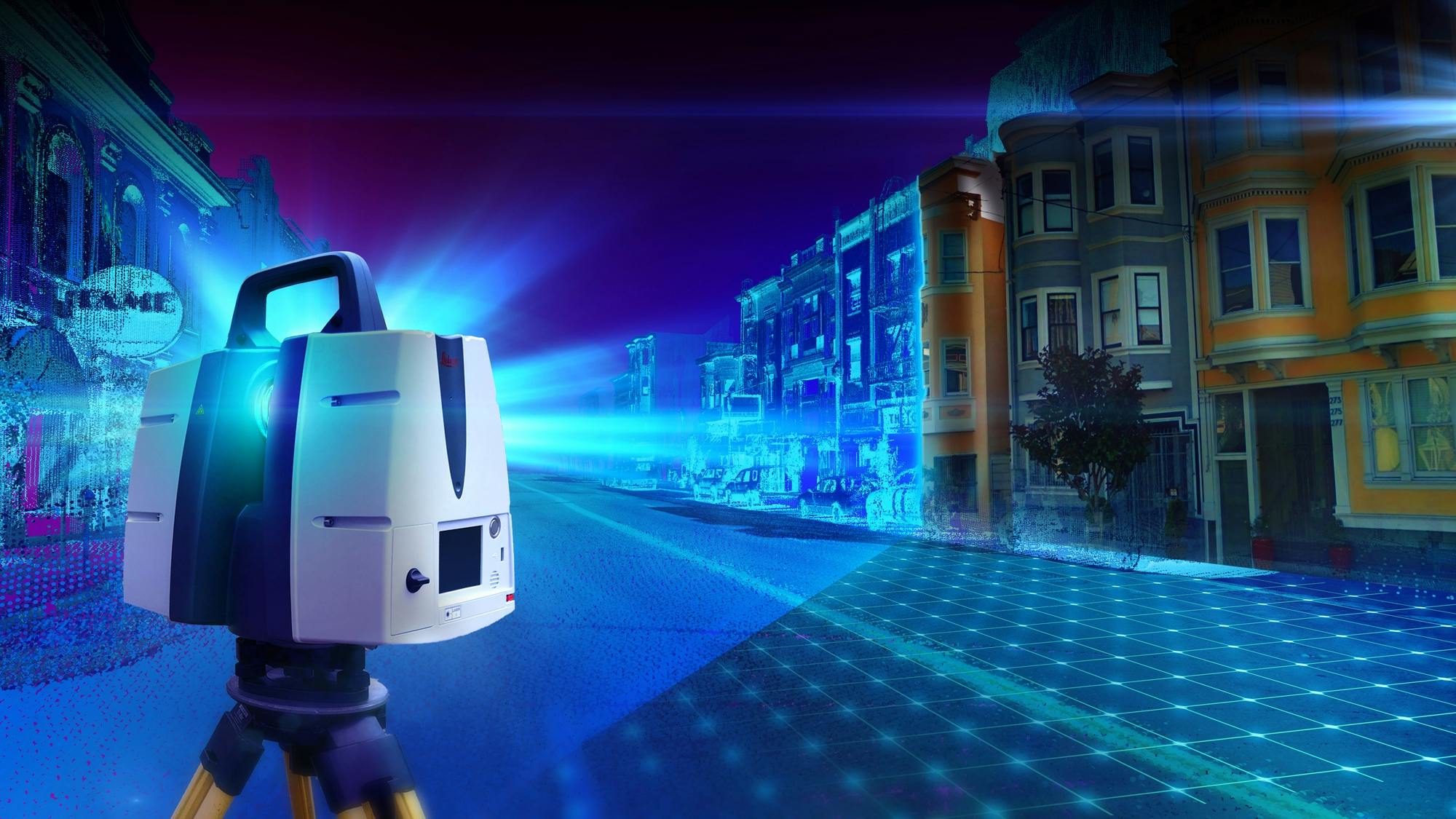Enhancing Production Processes: The Impact of 3D Laser Scanning on High Quality Control
3D laser scanning modern technology is transforming quality assurance in manufacturing. By offering exact dimensions and high-resolution data, it allows makers to identify deviations from requirements easily. This innovation not only streamlines inspection procedures yet also boosts operational effectiveness. 3D Scanning. Nevertheless, the implementation of this innovation includes its own set of obstacles. Checking out these facets reveals the wider ramifications for sectors and the future landscape of manufacturing

Comprehending 3D Laser Scanning Technology
Although 3D laser scanning innovation has progressed substantially over the last few years, its essential principle remains uncomplicated: catching the specific geometry of objects using laser beams. This modern technology utilizes laser light to gauge distances between the scanner and different factors on a things's surface area. The data gathered is then refined to develop an in-depth 3D version, precisely reflecting the dimensions and shapes of the scanned item.
Typically, 3D laser scanners can be classified into two main kinds: call and non-contact scanners. Call scanners physically touch the challenge collect measurements, whereas non-contact scanners utilize laser beam of lights to record data from a range. The convenience of this modern technology allows its application throughout different sectors, including manufacturing, building, and design. Its capability to generate high-resolution versions helps with quality control, reverse engineering, and fast prototyping, eventually boosting layout accuracy and effectiveness in production procedures.
Advantages of 3D Laser Scanning in Manufacturing
As manufacturers look for to enhance performance and precision in their procedures, the benefits of 3D laser scanning have actually come to be progressively evident. This innovative technology enables rapid and very accurate dimensions of complicated geometries, substantially minimizing the time needed for top quality checks. By catching detailed information, makers can recognize inconsistencies early in the manufacturing process, consequently lessening waste and rework costs.
Additionally, 3D laser scanning promotes far better style recognition, making it possible for designers to contrast as-built conditions with original specifications. This capability ensures that any type of variances are promptly addressed, enhancing total item high quality. Furthermore, the modern technology supports the development of digital twins, which can be utilized for simulations and process optimizations. Because of this, manufacturers not just boost their operational efficiency yet additionally improve their affordable benefit in the marketplace. On the whole, the combination of 3D laser scanning stands for a transformative action towards attaining higher criteria in manufacturing high quality control.
Integration of 3D Laser Scanning Into Top Quality Control
Incorporating 3D laser scanning right into quality control processes improves the accuracy and effectiveness of examinations throughout manufacturing. This modern technology makes it possible for producers to capture comprehensive, high-resolution information of elements and assemblies, enabling specific measurements and contrasts against style specs. By utilizing 3D laser scanning, companies can determine inconsistencies from tolerances better, which is essential for keeping product integrity.

Real-World Applications and Situation Researches
Real-world applications of 3D laser scanning in making demonstrate its transformative effect across various markets. As an example, aerospace companies utilize this innovation to perform precise inspections of parts, guaranteeing they fulfill rigorous safety and security standards. A remarkable instance involved a leading aircraft supplier that employed 3D laser scanning to simplify its high quality control processes, significantly reducing assessment times and errors.
In the automotive market, producers have actually implemented laser scanning to produce electronic twins of their cars, making it possible for real-time changes during manufacturing. One vehicle company reported a 30% decrease in rework prices after incorporating this modern technology right into their production line.
Moreover, in the consumer items market, companies are using 3D laser scanning for quick prototyping, permitting quicker models and enhanced item layouts. These applications show exactly how 3D laser scanning not only enhances precision yet also enhances effectiveness and advancement across multiple manufacturing domain names.
Getting Over Challenges in Implementation
Executing 3D laser scanning in manufacturing presents a number of challenges that companies have to browse to totally understand its benefits. One substantial obstacle is the first expense of equipment and software program, which can hinder companies from embracing this innovation. Additionally, incorporating 3D laser scanning into existing process calls for getting over resistance to change among employees, demanding comprehensive training programs to ensure effectiveness. Data management also poses an obstacle, as the high volume of information generated by 3D scanning need to be properly processed and assessed to obtain actionable understandings. Compatibility concerns with legacy systems might impede smooth integration, demanding possible upgrades or adjustments. Addressing these difficulties is necessary for producers intending to boost top quality control and optimize production processes. By creating clear strategies for training, investment, and information monitoring, companies can minimize these challenges and release the transformative read the article capacity of 3D laser scanning in their procedures.
Future Fads in 3D Laser Scanning for Production
As producing continues to evolve, the combination of 3D laser scanning with raised automation is anticipated to transform production processes. Improved data analytics will play an important function in optimizing process and boosting high quality control. These trends highlight the potential for better performance and precision in making settings.

Increased Automation Combination
The integration of automation in production has been gradual, the future of 3D laser scanning is poised to accelerate this trend significantly. As producing processes come to be progressively complicated, the demand for precise, real-time measurements grows. 3D laser scanning innovation uses automated data capture, minimizing labor costs and minimizing human error. This combination allows suppliers to enhance quality assurance processes, allowing rapid discovery of variances in production. Furthermore, the alignment of 3D laser scanning with robotics and automated systems facilitates seamless procedures, enhancing total performance. As makers embrace these advanced technologies, they can expect improved precision and efficiency, placing themselves competitively in a rapidly progressing market. The harmony between automation and 3D laser scanning notes a substantial jump onward in making advancement.
Enhanced Information Analytics
The integration of automation has led the method for developments in data analytics within the domain of 3D laser scanning. Makers are progressively leveraging innovative algorithms and equipment understanding methods to evaluate substantial datasets created by laser scans. This enhanced information analytics capability permits for real-time surveillance of manufacturing processes, allowing the recognition of deviations and defects a lot more efficiently than typical methods. Predictive analytics can visualize potential concerns, considerably lowering downtime and enhancing overall performance. Moreover, the ability to picture information in 3 measurements gives much deeper understandings into production process, fostering far better decision-making. As 3D laser scanning modern technology remains to evolve, the role of data analytics will come to be increasingly important in driving advancement and keeping competitive benefit in production.
Regularly Asked Questions
What Industries Benefit one of the most From 3D Laser Scanning?
The sectors that benefit most from 3D laser scanning consist of manufacturing, building, aerospace, auto, and health care. These sectors make use of the innovation for precision measurements, quality control, and reliable design processes, considerably enhancing overall operational performance.
Exactly How Does 3D Laser Scanning Compare to Conventional Dimension Techniques?
3D laser scanning provides greater precision and speed contrasted to conventional measurement methods. It catches in-depth geometries swiftly, decreasing human visit here mistake and facilitating much better analysis, which eventually improves total quality assurance in various sectors.
What Is the Cost of Applying 3D Laser Scanning Technology?
The expense of implementing 3D laser scanning technology varies significantly, commonly ranging from $10,000 to $100,000, depending on training, tools, and software. Organizations must evaluate these costs versus possible effectiveness and quality enhancements.
Exist Specific Software Demands for 3D Laser Scanning?
Yes, 3D laser scanning calls for certain software, consisting of data handling and modeling applications. Typical choices include CAD software application, factor cloud handling devices, and specialized applications that promote the assimilation and evaluation of scanned data for excellent results.
For how long Does a Normal 3D Laser Scanning Process Take?
A regular 3D laser scanning process can take anywhere from a couple of mins to numerous hours, depending upon variables like the size of the item, intricacy of the atmosphere, and needed degree of information for precision.
3D laser scanning modern technology is transforming high quality control in manufacturing. 3D laser scanning modern technology has developed substantially in current years, its fundamental principle stays uncomplicated: recording the accurate geometry of items using laser beam of lights. Incorporating 3D laser scanning into top quality control processes improves the accuracy and efficiency of assessments throughout production (3D Scanning). 3D laser scanning modern technology uses automated data capture, reducing labor costs and lessening human mistake. The price of implementing 3D laser scanning modern technology differs considerably, usually varying from $10,000 to $100,000, look here depending on devices, training, and software application